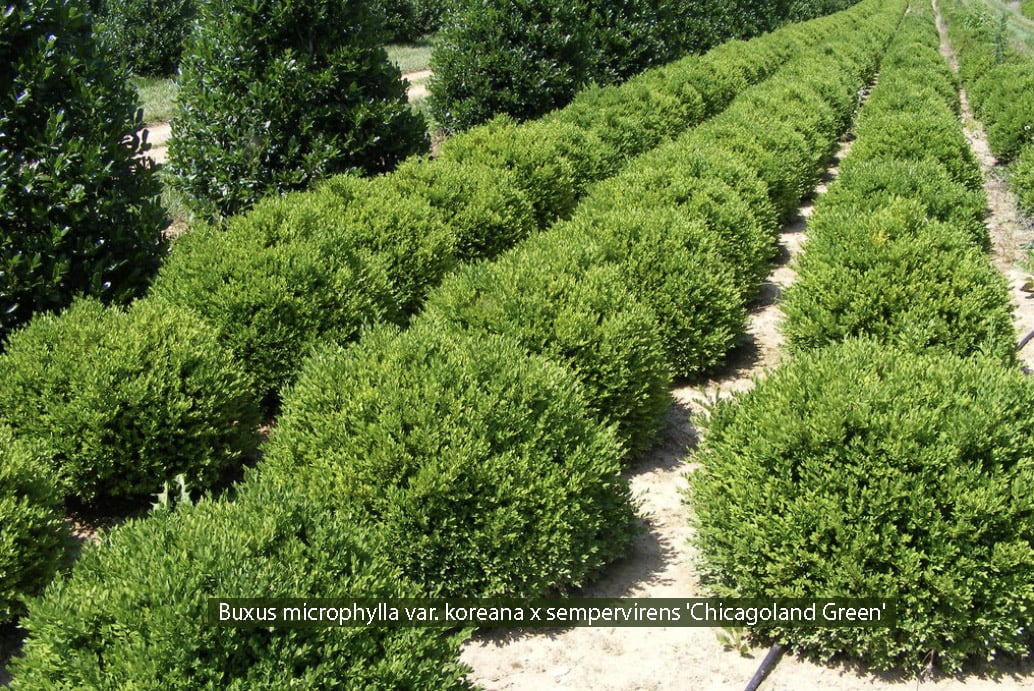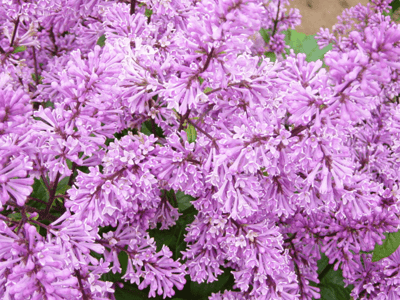We all know there is enormous variety in the plant world. Yet when you are having trouble locating the cultivars you use the most, the ones most requested by your customers, you might feel like you are out of options. You are not. Breeders all over the world continue to develop new and (theoretically) improved cultivars. Although hundreds of these inventions never even make it to market, a few cultivars truly are improvements yet remain largely unknown… mainly because it is hard to compete with the heavily marketed brand names.
In my opinion, these under-utilized cultivars hold exceptional merit yet are not widely recognized. In fact, there are so many great under-utilized options, I’ll be sharing the rest in a Part 2 post. For now, here is a first installment of excellent alternatives to your “go to” cultivars that may prove to be better options overall.
Globose Boxwood - Which one to use?
Often landscapers and wholesale buyers will call asking for a specific Boxwood such as ‘Green Mound’, ‘Green Velvet’, and ‘Chicagoland Green’. Buyers are probably not aware that the originator of ‘Green Velvet’ believes ‘Chicagoland Green’ is the same plant with a different name. ‘Green Velvet’ may have slightly lighter green foliage; ‘Green Mound’ is more spherical than the other two, which tend to be wider than tall at maturity; and ‘Green Mound’ and ‘Chicagoland Green’ may be more cold hardy than ‘Green Velvet’. Otherwise they are extremely hard to tell apart and are easily substituted for one another.
 You can test this right now if you happen to have samples of all three. Put them in a row, stand 20 ft away, and you’ll have a hard time telling them apart. Most customers ask for ‘Green Velvet’ because of the brand name awareness. If we could, we’d like to grow just four boxwood cultivars and be done with it: ‘Green Mountain’, ‘Green Velvet’, ‘Green Ice’, and ‘Dee Runk’.
You can test this right now if you happen to have samples of all three. Put them in a row, stand 20 ft away, and you’ll have a hard time telling them apart. Most customers ask for ‘Green Velvet’ because of the brand name awareness. If we could, we’d like to grow just four boxwood cultivars and be done with it: ‘Green Mountain’, ‘Green Velvet’, ‘Green Ice’, and ‘Dee Runk’.
Hibiscus syriacus - Don’t feel the need to reseed
 Many in our business keep a safe distance from Hibiscus syriacus because of its infamous reputation for reseeding. But step past that (reasonable) bias for a minute to check out some of the newer cultivars- the Hibiscus breeders have been busy. The new cultivars tend to reseed far less. In our experience ‘Diana’ and ‘Helene’ haven’t been reseeding at all. Both have white flowers. ‘Helene’ is white with a red eye and might replace ‘Red Heart’. The reseeder Hibiscus syriacus could be more user friendly if well mulched in spring before seed germination from the prior year seed production.
Many in our business keep a safe distance from Hibiscus syriacus because of its infamous reputation for reseeding. But step past that (reasonable) bias for a minute to check out some of the newer cultivars- the Hibiscus breeders have been busy. The new cultivars tend to reseed far less. In our experience ‘Diana’ and ‘Helene’ haven’t been reseeding at all. Both have white flowers. ‘Helene’ is white with a red eye and might replace ‘Red Heart’. The reseeder Hibiscus syriacus could be more user friendly if well mulched in spring before seed germination from the prior year seed production.
Syringa x prestoniae - A late bloomer worth waiting for
 Can’t find Syringa vulgaris? There’s a better option in the Preston Hybrids. The Preston Hybrids don't have Syringa’s powdery mildew and other disease issues and can tolerate heat better. One note of caution: you’ll need to devote some time to deadheading the Preston Hybrids if you choose them as the Syringa vulgaris alternative, or leave the spent flowers until spring as they add winter interest.
Can’t find Syringa vulgaris? There’s a better option in the Preston Hybrids. The Preston Hybrids don't have Syringa’s powdery mildew and other disease issues and can tolerate heat better. One note of caution: you’ll need to devote some time to deadheading the Preston Hybrids if you choose them as the Syringa vulgaris alternative, or leave the spent flowers until spring as they add winter interest.
We also grow another Preston cultivar called ‘Minuet’ that is a phenomenal bloomer. It is a very slow growing plant so most growers won’t invest in it. That slow growth means a slim profit margin compared to other cultivars. Why should you choose ‘Minuet’? You’ll get reliable blooming year over year where vulgaris gives you more unpredictability.
Heptacodium miconioides - Flowers as big as your hand
![]() Heptacodium, commonly called “Seven Son Flower,” is a favorite of ours. A loosely branching shrub with light green foliage through the summer, this plant is a heavy bloomer. Expect large panicles of white flowers to dazzle in August. These are followed by an even showier display of pink fruits (like elderberries). To top it off this plant also has visually spectacular exfoliating bark. I’ve seen it limbed up to grow in tree form with the bark visible, making for a beautiful specimen. I would love for more people to become familiar with this stunning plant.
Heptacodium, commonly called “Seven Son Flower,” is a favorite of ours. A loosely branching shrub with light green foliage through the summer, this plant is a heavy bloomer. Expect large panicles of white flowers to dazzle in August. These are followed by an even showier display of pink fruits (like elderberries). To top it off this plant also has visually spectacular exfoliating bark. I’ve seen it limbed up to grow in tree form with the bark visible, making for a beautiful specimen. I would love for more people to become familiar with this stunning plant.
If all that weren’t enough, Seven Son also attracts hummingbirds and butterflies. According to the Missouri Botanical Garden, “The common name seven-son flower comes from the translation of the Chinese name for this plant. The name refers to the typically seven-part flower clusters that make up the inflorescence.”
What to Do When Your "Go To's" Aren't Available
If you want to get out of the rut chasing those hard to get brand names, think seriously about broadening your horizons. Expand your palette by including those under-utilized cultivars. This is something you have to start well before presenting a planting plan to your customer. If you understand what your customer (or your project landscape architect) is trying to accomplish, it should be much easier to present alternatives that can fulfill the same objective.
In fact, there are so many alternatives, I’ll be sharing the rest in Part 2 of this post. The point is, if you set up the expectations properly, it becomes much easier to shift to your “plan B” options when your “go-to” cultivars are not in stock. Plus, you might even find some new “go-tos.”
Reserving the plants you need for when you need them can be a real challenge. Download our ebook Solving Plant Shortages in a High Demand Landscaping Market to learn about practical solutions to common plant sourcing problems.





